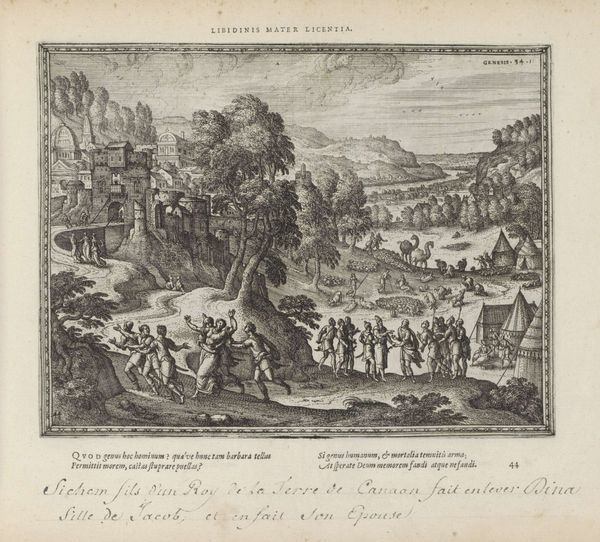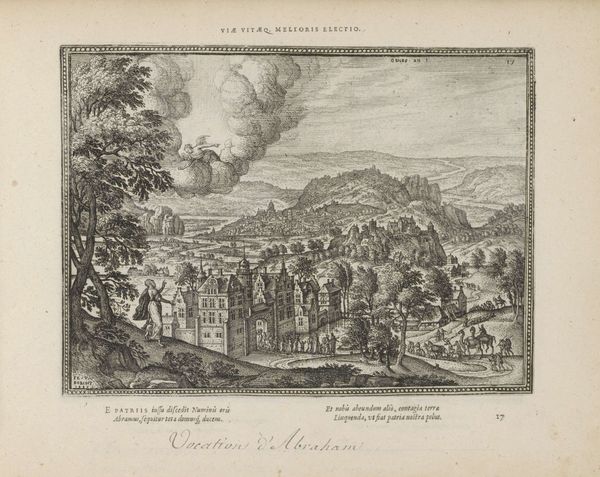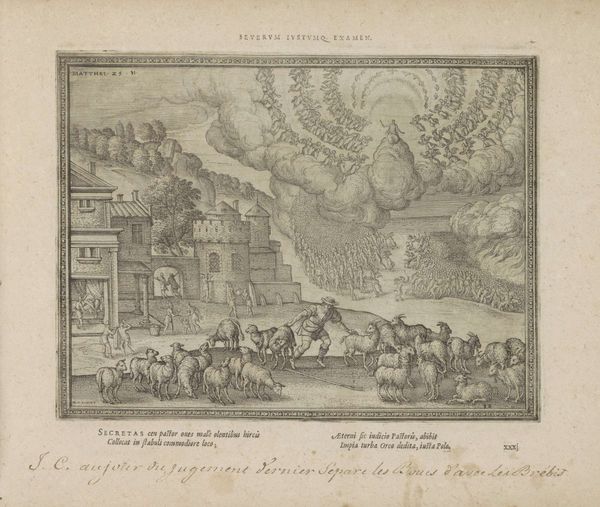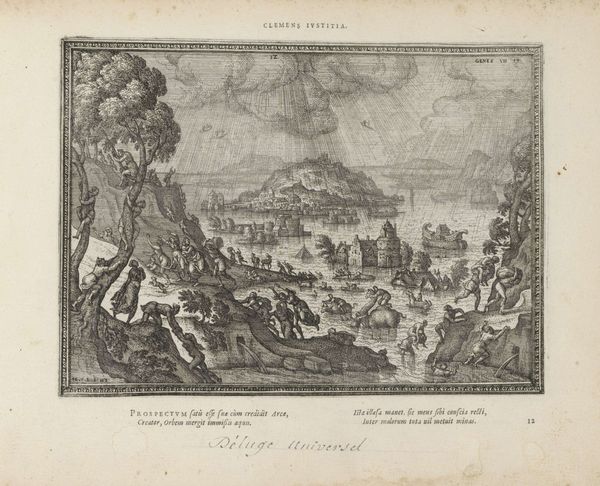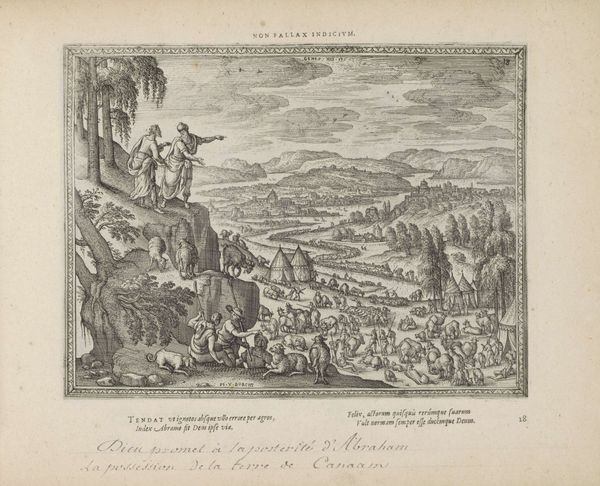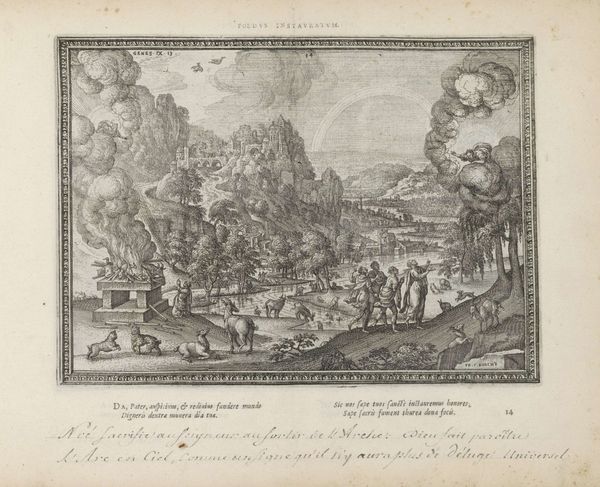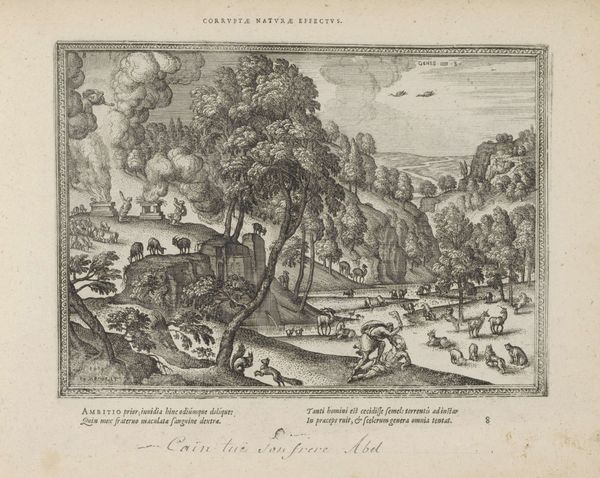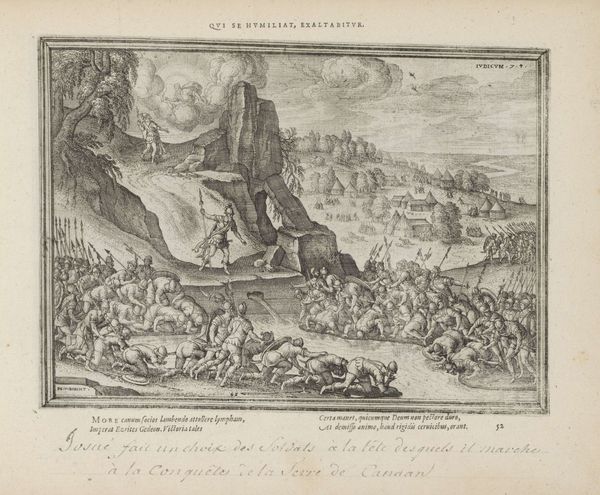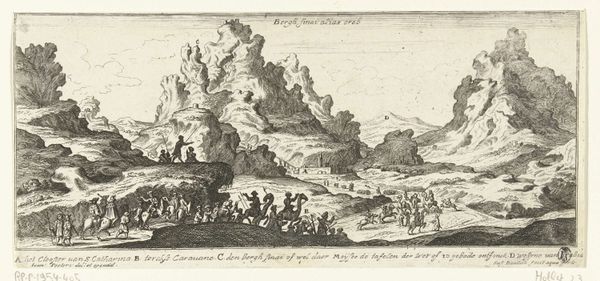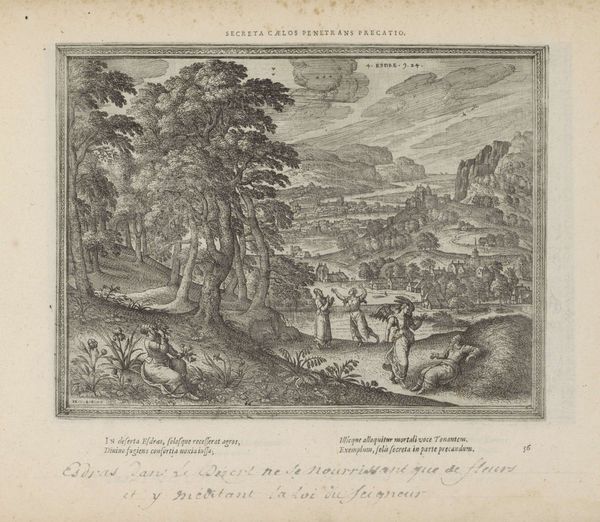
Vernietiging van Sodom en Gomorra / Lot en zijn dochters 1582 - 1613
0:00
0:00
pietervanderiborcht
Rijksmuseum
print, etching, engraving
#
aged paper
#
toned paper
#
narrative-art
# print
#
etching
#
old engraving style
#
landscape
#
mannerism
#
figuration
#
history-painting
#
engraving
Dimensions: height 188 mm, width 246 mm
Copyright: Rijks Museum: Open Domain
Curator: This engraving, titled "Vernietiging van Sodom en Gomorra / Lot en zijn dochters" or "Destruction of Sodom and Gomorrah / Lot and his Daughters," created between 1582 and 1613, is by Pieter van der Borcht the Elder. It’s currently held at the Rijksmuseum. Look closely—it’s a potent depiction of divine retribution rendered in etching and engraving on toned paper. Editor: My immediate reaction is one of utter devastation. The stark contrast between the detailed rendering of the burning city and the comparatively calm foreground creates a chilling sense of impending doom. It makes you consider who gets to witness catastrophe, and the burden they bear. Curator: Absolutely. If we look closely at the material aspects, the toned paper itself, while likely a necessity of the period, enhances that feeling. It suggests age, decay and loss even before we consider the imagery, plus its reproductive capacity through the engraving technique itself allows for a broader critique of societal morals. Editor: The gender dynamics also strike me. We see Lot and his daughters huddled in the cave, ostensibly saved, but already caught in a new patriarchal drama set against the backdrop of mass destruction. This points to the complex intertwining of salvation, familial power, and survival within the biblical narrative and how societal structures reinforce them. Curator: True, the scene also becomes a tableau about resources and access during and after traumatic experiences. Think about the physical process of etching and engraving too. It required incredible skill and access to resources such as the metal plates and tools, demonstrating the societal structures in play even within the creation of art. The final product itself becomes a commentary on cultural fears about transgression and punishment. Editor: The broader impact, though, hinges on questioning those very values and behaviors society seeks to regulate through terror, revealing how communities determine whose actions constitute transgression worthy of collective eradication. The narrative prompts a broader discussion around power and accountability. Curator: Agreed. Examining both the artistic practice behind its creation, and how that creation plays into socio-historical narratives provides multiple readings. It is an incredibly complex artwork, open to numerous avenues for critical analysis. Editor: Yes, exactly. An art object offering entry points for thinking about ethics and access – or inaccessibility – around traumatic events in different contexts is powerful. It urges consideration not just of the Biblical account itself, but how we, across time, engage with representations and realities of ruin.
Comments
No comments
Be the first to comment and join the conversation on the ultimate creative platform.
